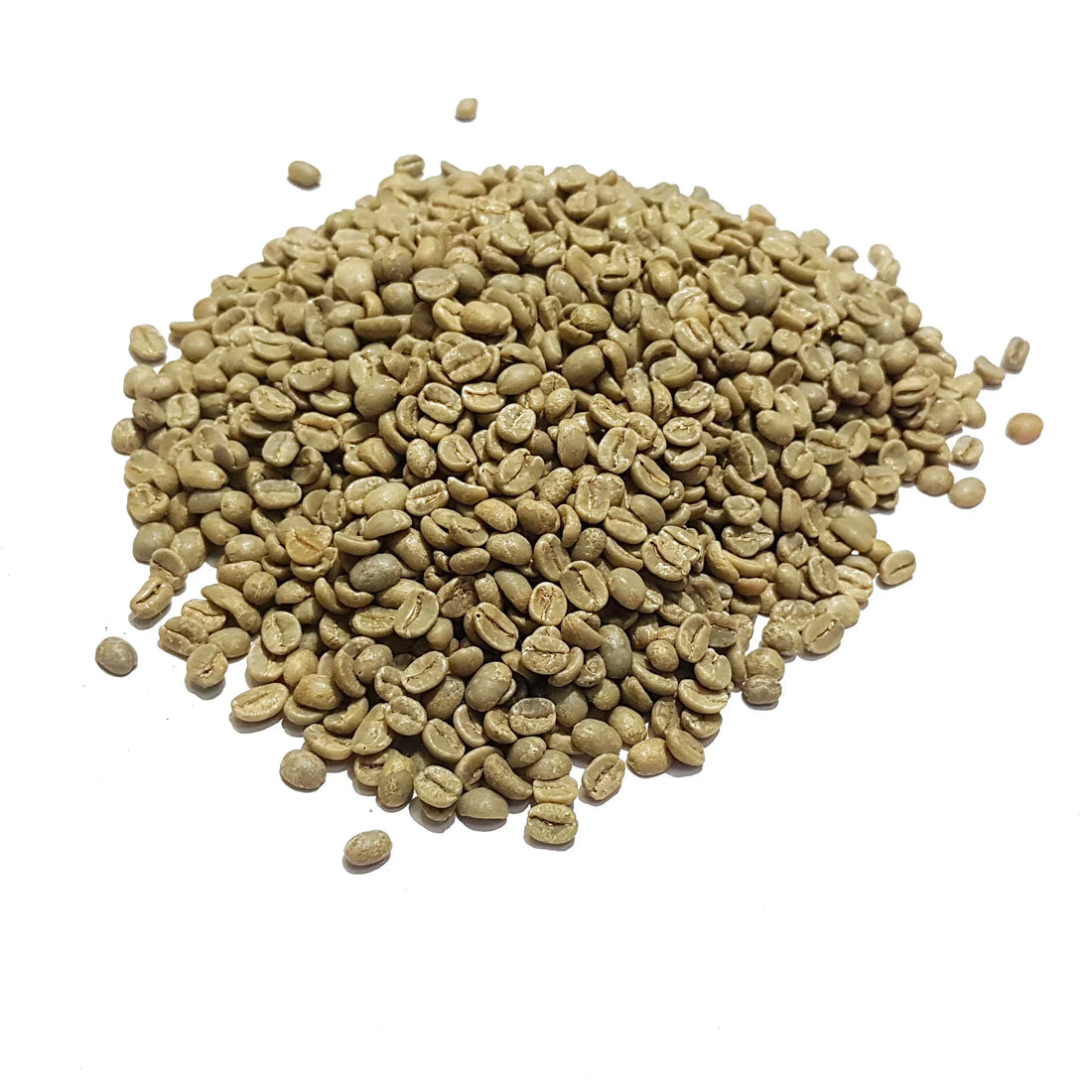
Clasificación del café verde: Explorando los sabores únicos de los granos panameños
Clasificación del café verde: Explorando los sabores únicos de los granos panameños
Cuando pensamos en café, la mayoría imaginamos la bebida oscura y aromática que da comienzo a nuestras mañanas. Pero antes de que los granos de café lleguen a la tostadora, se encuentran en un estado crudo, sin tostar, conocido como café verde . En esta etapa, el grano conserva todas sus propiedades naturales: antioxidantes, ácidos clorogénicos y todo el potencial de sabor que se revelará posteriormente durante el tostado.
El café verde no es solo una cosa; se clasifica de diversas maneras que determinan su calidad, sabor y carácter. Exploremos las clasificaciones clave del café verde, con especial atención a uno de los orígenes más admirados del mundo: Panamá .
☕ 1. Clasificación por origen: La herencia cafetera de Panamá
El origen geográfico del café verde influye enormemente en su sabor, aroma e incluso en su acidez. El clima, la composición del suelo, la altitud y las prácticas agrícolas locales influyen en el perfil final de la taza.
Panamá se destaca como uno de los orígenes de café más prestigiosos del mundo, gracias a su terroir único y sus meticulosas prácticas de cultivo. He aquí por qué el café panameño es tan famoso:
-
Región de Boquete : Ubicado en las Tierras Altas de Chiriquí, Boquete es la región cafetalera más famosa de Panamá. Su suelo volcánico, su clima fresco de montaña y sus abundantes lluvias crean condiciones ideales para el cultivo.
-
Variedad Geisha : Panamá es conocido por su café Geisha (o Gesha) , una rara variedad de Arábica originaria de Etiopía. El café Geisha panameño alcanzó fama internacional por su exquisito aroma floral, su brillante acidez y sus notas de jazmín, miel y bergamota.
-
Otras variedades : Además de Geisha, Panamá también produce granos Caturra, Catuai y Typica, que ofrecen notas de nuez, chocolate y fruta según el procesamiento.
Las pequeñas fincas familiares de Panamá y su compromiso con la producción artesanal y sostenible hacen que su café verde sea muy buscado por los tostadores de especialidad de todo el mundo.

🌱2. Clasificación por tamaño y forma
El tamaño y la forma de los granos de café verde determinan su calidad y la uniformidad con la que se tuestan. Los granos más grandes y uniformes suelen tostarse de forma más consistente y ofrecen un sabor más limpio.
A continuación se muestra un desglose del sistema de calificación común:
-
AAA : Los granos más grandes y uniformes; calidad premium.
-
AA : Un poco más pequeño pero aún muy consistente en tamaño.
-
A : Granos de tamaño mediano con pequeñas irregularidades.
-
B : Granos más pequeños y desiguales, a menudo utilizados para mezclas o consumo local.
En Panamá, la mayoría de los cafés especiales, especialmente el Geisha, se encuentran dentro de los grados AAA o AA , lo que garantiza una uniformidad excepcional y claridad de sabor después del tostado.
3. Clasificación por método de procesamiento (calidad)
El procesamiento del grano tras la cosecha influye significativamente en su sabor. En Panamá, los agricultores son conocidos por su innovación en los métodos de procesamiento, experimentando a menudo con técnicas de fermentación para crear perfiles de sabor únicos.
Estos son los tipos principales:
-
Prime Washed : granos de alta calidad completamente lavados y secados al sol, que producen sabores brillantes y limpios.
-
Lavado (completamente lavado) : los granos se lavan para eliminar el mucílago, lo que da como resultado una acidez crujiente y claridad en la taza.
-
Natural (procesado en seco) : los granos se secan dentro de la fruta, lo que produce sabores más dulces, afrutados y parecidos al vino.
-
Pulpa natural (procesada con miel) : los granos se lavan parcialmente, conservando algo de mucílago antes del secado, lo que produce dulzura y cuerpo equilibrados.
Las granjas especializadas de Panamá a menudo experimentan con miel y procesos naturales , dando lugar a perfiles de taza únicos que combinan frutas tropicales, notas florales y texturas sedosas.
4. Clasificación por grado de tostado
Aunque el café verde no está tostado, los tostadores lo clasifican posteriormente según el grado de tueste aplicado. Cada nivel de tueste realza diferentes aspectos del sabor natural del grano.
-
Tueste Ligero : Conserva los sabores y la acidez originales del grano. Ideal para los delicados granos Geisha de Panamá.
-
Tueste medio : equilibra la acidez con el dulzor, ideal para la mayoría de los Arábicas panameños.
-
Tostado oscuro : enfatiza el amargor y el cuerpo, pero puede eclipsar las notas más sutiles de Panamá.
Para los cafés especiales de alta gama de Panamá, se prefieren los tostados ligeros a medios para resaltar la complejidad natural del grano.
¿Por qué elegir café verde de Panamá?
Panamá puede ser pequeño, pero su cultura cafetera es poderosa. Su enfoque en la calidad sobre la cantidad, combinado con microclimas únicos y agricultura sostenible, hace que su café verde sea uno de los más distintivos del mundo.
Beneficios clave del café verde panameño:
✅ Aroma y complejidad excepcionales (especialmente la variedad Geisha)
✅ Rico en antioxidantes y compuestos naturales
✅ De origen ético de pequeñas granjas
✅ Ideal para tostar en casa o en cafeterías especializadas.
Comprender las clasificaciones del café verde, desde su origen y tamaño hasta su procesamiento y tueste, le ayudará a apreciar el proceso detrás de cada taza. Y cuando se trata de orígenes verdaderamente extraordinarios, Panamá se destaca por su compromiso con la excelencia, la innovación y la sostenibilidad.
Así que la próxima vez que tome una taza de café, recuerde: la historia comienza mucho antes del tostado, con el humilde grano de café verde , cultivado con cuidado en las exuberantes tierras altas de Panamá.
